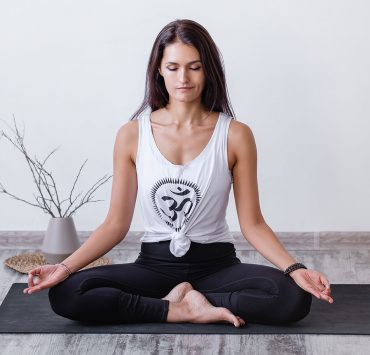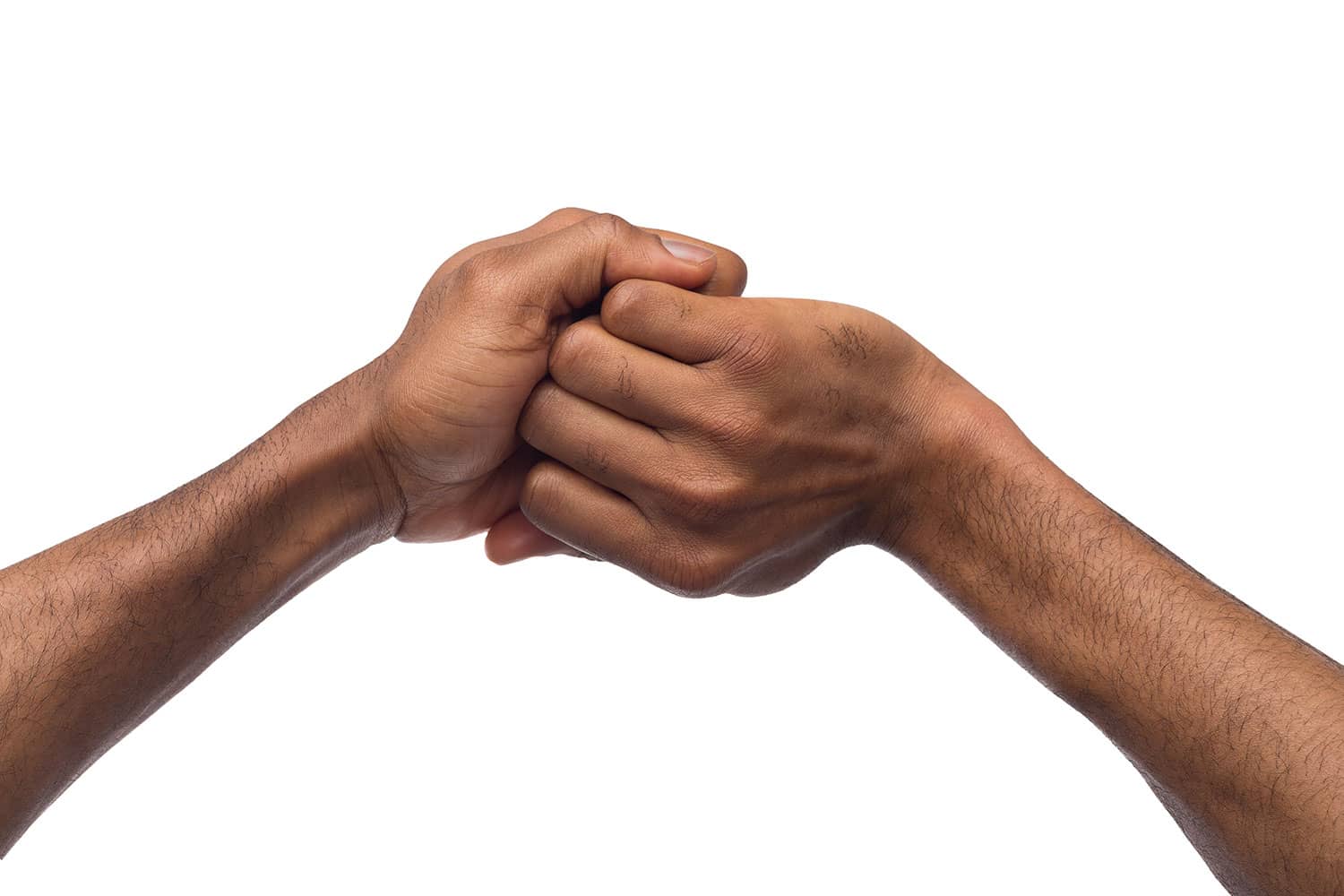
Lauren Howard holds a master certification in reiki, or energy…
Ganesha mudra is a gesture that intends to strengthen our hearts. Both, on an emotional and physical level. In this mudra, both hands hold each other and clasp at the chest. This unity balances a duality that signifies security, comfort, and stimulates love. It helps us to have an inner sense of compassion. This mudra is comforting during meditation, as it helps the mind be at ease.
Ganesha is an elephant-headed Hindu deity. He is one of the most distinctive gods due to his appearance. Still, He serves as a supreme being capable of ensuring success. He creates obstacles for ambitious people whose goals have become damaging to themselves. Ganesha represents “the ability to overcome,” and Mudra is a term that describes ‘to seal’ or ‘gesture.’
The Ganesha Deity Origin
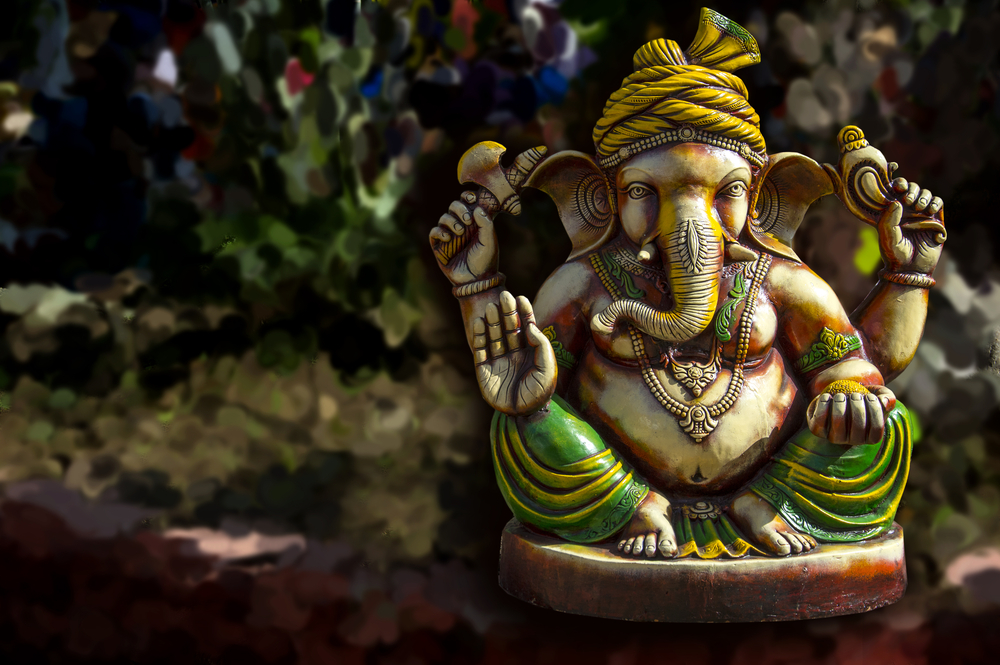
As mentioned above, the mudra is representative of the Hindu deity of Ganesha. He is an honored god whose presence is a blessing to a new venture or milestone as he brings forth success. Ganesha is a sort of role model who’s depicted in art, storytelling, and even through film. All because of Ganesha’s traits and characteristics of admiration.
Ganesha’s origin is told as the Goddess Parvati asked for Nandi, her husband Shiva’s bull, to take the watch to so she may bathe privately. Nandi takes the watch, and as her husband, Shiva, returns, Nandi allows him to pass. Nandi is first loyal to Shiva, and this angers Parvati. So, taking the turmeric paste (that she uses for her bathing), she breathes life into it. This creates Ganesha.
Thus the next time Parvati asked not to have visitors, she sent Ganesha to take a look. This time, as her husband Shiva returns, he greets Ganesha, who is denying him access into the home. This infuriates Shiva. Shiva orders his army to destroy him. But, he was left victorious because of the great power he possesses from Goddess Parvati.
To Shiva’s surprise, he survives, and it is now for him to fight the boy. With his divine power, he kills him by severing Ganesha’s head. When his wife Parvati realized this, she was so upset that she decided that she was to destroy her entire creation from existence. Yet, Lord Brahma, the creator, asks her to reconsider.
She agrees but asks for two conditions: the Ganesha returns to life and to receive worship as a god. Shiva, realizing what Ganesha meant to Parvati, agrees to what she desires. Shiva asks Brahma to bring back the head of the first creature he crosses. Soon he returns with the head of a healthy elephant, and Shiva places this head on Ganesha’s body. Once again, breathing life into the boy, he is then honored as one of the gods.
Ganesha Origin Meaning For Today’s Mudra
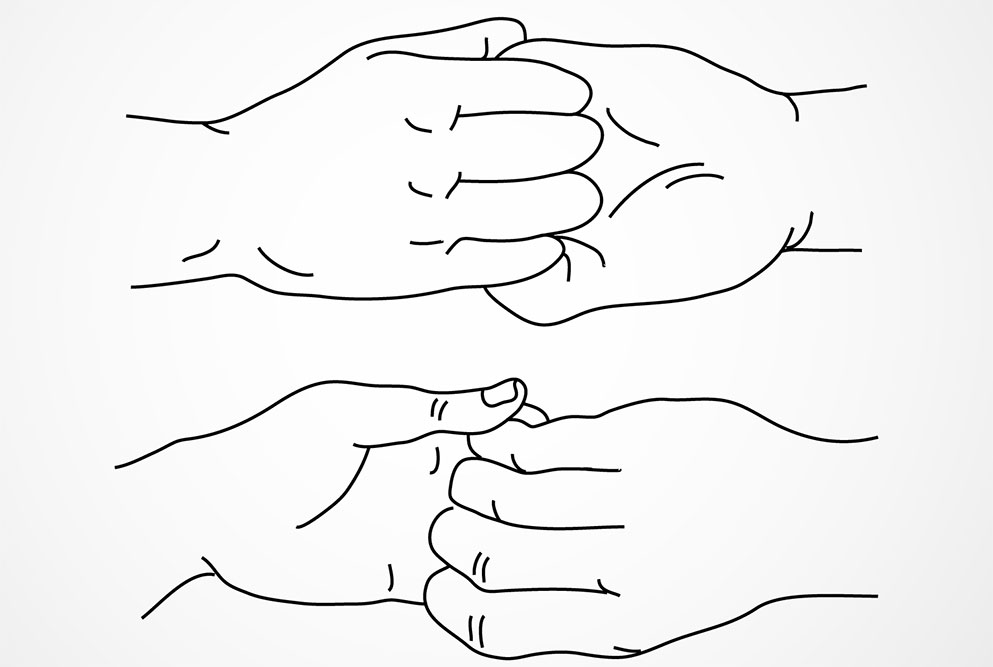
The storytelling of Ganesha’s origin may not seem to have much depth on the surface but the story riddles with substance. For instance, Parvati is a form of Devi or Goddess. She represents supreme energy within the shape of the human body. Her being rests within the Muladhara chakra or the root chakra as the sacred divine within us all. The belief is that as we remove toxicities and impurities, the Lord appears. This is why Shiva returns unannounced in the story.
The bull, Nandi, who first serves the watch, illustrates temperament. Nandi commits himself to serving Shiva. This demonstrates servitude to Lord Shiva. Because of this, he’s given access to the Goddess despite his orders. This can signify the development of this devotion for spiritual attainment. After this happens, the Goddess takes turmeric paste, breathing life into it. This is how she creates Ganesha and he is an extension of her power and serves her will. The color yellow represents the Muladhara chakra and Ganesha. This is also where the kundalini, the divine energy, resides in us.
This is who guards this chakra for us today. He serves as a shield to protect our divinity from minds who are not ready to accept its truth. Once achieving awareness, and looking inward as Nandi had, the secrets to the universe is revealed.
Shiva serves as a Lord and teacher. When he arrives back at his home and is greeted by Ganesha, he is unaware of his presence, denying him access. Ganesha here can serve as a representation of our ego. The ego is so powerful that an entire army Is unable to kill Ganesha. He still stands victorious. It isn’t until the great Shiva returns to the severe head of the ego.
As Parvati threatens to destroy Ganesha’s existence, thus the ego dies along with Ganesha’s demise. The jiva or soul loses interest in its physical vehicle, the body of Ganesha. At this part of the story, the material world is demonstrated by the Goddess. The creation of the Goddess to whom the creature belongs is impermanent, whereas Shiva is unchanging. This means that when the ego dies in our material world, its existence also disappears.
Shiva restores life to Ganesha, replacing its head with an elephant, signifying that before we leave our bodies. The Lord returns our small ego with a large ego. At first glance, this could appear counterintuitive. But, it is not the case. We are not identifying with the self, but rather with the sizable universal self. Renewing our lives and the meaning forever.
Remove Obstacles With Ganesha Mudra

Ganesha mudra is infamous as a mudra that is able to remove obstacles. It’s capable to remove the barriers we may face because it’s the ability to work within. Our hearts and the heart chakra are the center of our body. This can influence our physical and mental behavior. When performing the mudra, it’s said that we are opening our ‘heart chakra’.
The heart chakra unsurprisingly is full of compassion, empathy, connection, and forgiveness. It bridges our capacity to demonstrate kindness and enriches the soul through connection. The heart chakra is a balance between the material world and that of the spiritual and metaphysical world. Thus, Ganesha Mudra handles strengthening the body. Both, physically and emotionally, to help achieve that balance.
When incorporating this mudra into practice, we increase our self-esteem. These mudra’s are capable of igniting our inner courage. Leading to feelings of strength and joy that can help combat burdens that people may identify with. Burdens such as depression or a feeling of heaviness. Ganesha Mudra can aid in building the spirit. It makes the individual feel strengthened from the outside in. Building courage to face those obstacles by igniting and finding balance with their heart chakra.
Ganesha Mudra’s Influence On The Heart Chakra
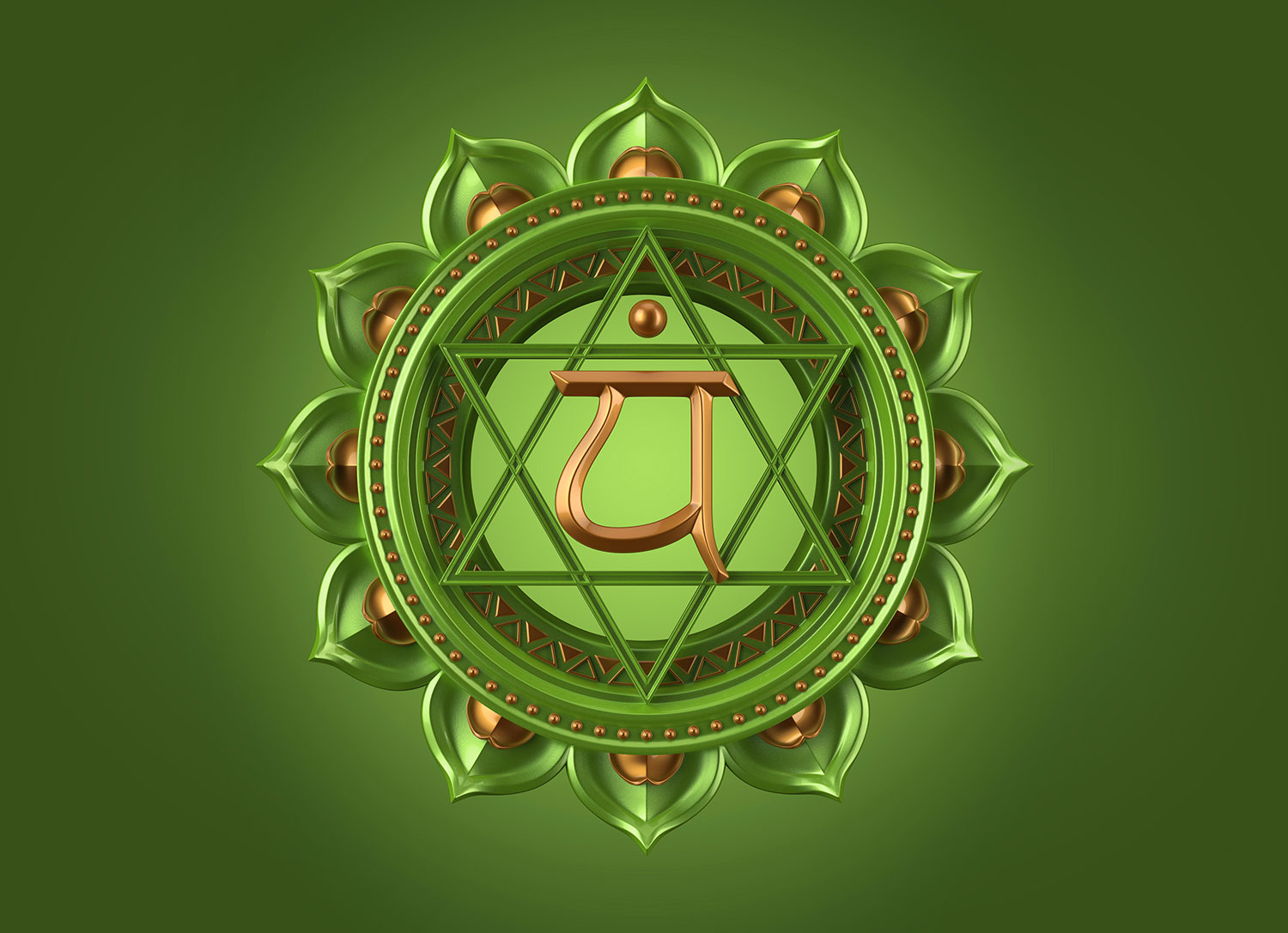
As mentioned above, the heart chakra helps us with many emotional connections, characteristics or acceptance of circumstances we’re unable to change. The heart chakra holds a responsibility to an array of different areas. For instance;
- Letting Go. The heart chakra helps us to recognize that life does not always have to meet our expectations. Sometimes there are better things in the store, but we don’t have a frame of reference to recognize what could be better for ourselves. We must trust the process and trust the outcome.
- Evolve Our Ego. The heart chakra shows that there is a balance to everything in life. What we love and what we find joy in also at times may cause suffering. When we learn to surrender our ego and reflect on our faults, we can disconnect from the material world. We realign our needs with divinity.
- Establish Better Relationships. When recognizing our attachments and aligning with love through the self’s evolution, we realize what truly matters – and that’s connection. We learn to trust our relationships because we understand the perspectives and values of others and ourselves.
- Release Pain and Forgive. The heart chakra’s objective is to have love prevail and be at peace with circumstances in our lives. For pain that we feel we have caused others, whether intentional or not, we must release this anguish and recognize that the only way to move forward is to forgive others and ourselves. It will be what sets us free.
Ganesha Mudra How-To

To perform Ganesha Mudra you have to first relax your mind and body. Allow yourself to become receptive to messages you may receive during meditation. Take deep breaths and listen to your intuition during this time.
Ganesha Mudra’s position is also significant. We clasp our hands in front of our chest because the heart chakra rests behind the thoracic cavity. This is right behind the breast bone and right in line with our heart. The importance of aligning with this chakra from an anatomical standpoint is that it’s near areas that have connections to important networks in our body. These systems are the cardiovascular system, respiratory system, and immune system. The most notable significance is it’s proximity to our lungs. Oxygen plays a large role in keeping us within a balanced state.
To begin Ganesha Mudra:
Step 1: Bring your hands together. Touching the fingertips to one another as you would for Anjali Mudra or prayer pose.
Step 2: Press the palms of your hands together and move your right hand towards the body while your left-hand pivots out. Now the fingertips are pointing in opposite directions.
Step 3: Bring a slight curve to your fingers while moving your hands over one another until your fingers can interlock.
Step 4: Take deep breaths. Consider closing your eyes and focusing on intent or affirmation.
Step 5: Relax the body and repeat breaths up to five times.
Step 6: Repeat with hands reversed.
Benefits of Ganesha Mudra

Ganesha Mudra is responsible for a myriad of different health benefits. Working from the inside and radiating out, this mudra has been associated with helping different areas of the body. Some of the benefits to Ganesha Mudra:
- Boosts Self-Esteem: Because of the Mudra’s heart chakra nature, it opens us up to acceptance of ourselves and others.
- Improves Digestive System: Ganesha Mudra helps to stimulate the digestive system and it activates the manipura chakra or the fire element.
- Energies the Body: The mudra works to energize the body and to bring strength to the arms and muscles in the chest.
- Expands Capacity in Lungs and Chest: Ganesha mudra can help some asthmatic patients improve their breathing.
- Alleviates Stress: We must practice deep breaths with this mudra to better bring attention to the current moment and also focus on what we must let go and forgive.
Affirmations For Ganesha Mudra

As Ganesha Mudra gives power from within, it’s helpful to incorporate mantras that will open your throat chakra. One way to bring intention to your meditation is to consider practice with a positive statement or message. Some affirmations to incorporate into practice can be:
- I meet others with courage.
- I am confident when I meet others.
- I have the courage for my day and am excited for what is to come.
- I meet others with openness and confidence.
- I am fully confident. I am full of love.
- I am full of life.
There are many stories and interpretations of how the deity came to be. The inspiration and the meaning of what Ganesha evokes remains consistent. Ganesha helps those who need to overcome and remember they’re capable of success. That all their answers are already within them, and that we should trust ourselves. And we should also trust in the possibilities in the universe.
What's Your Reaction?
Lauren Howard holds a master certification in reiki, or energy healing, and has been practicing yoga for over 20 years. She began freelance writing as a means of spreading her truth and knowledge with a broader audience.







